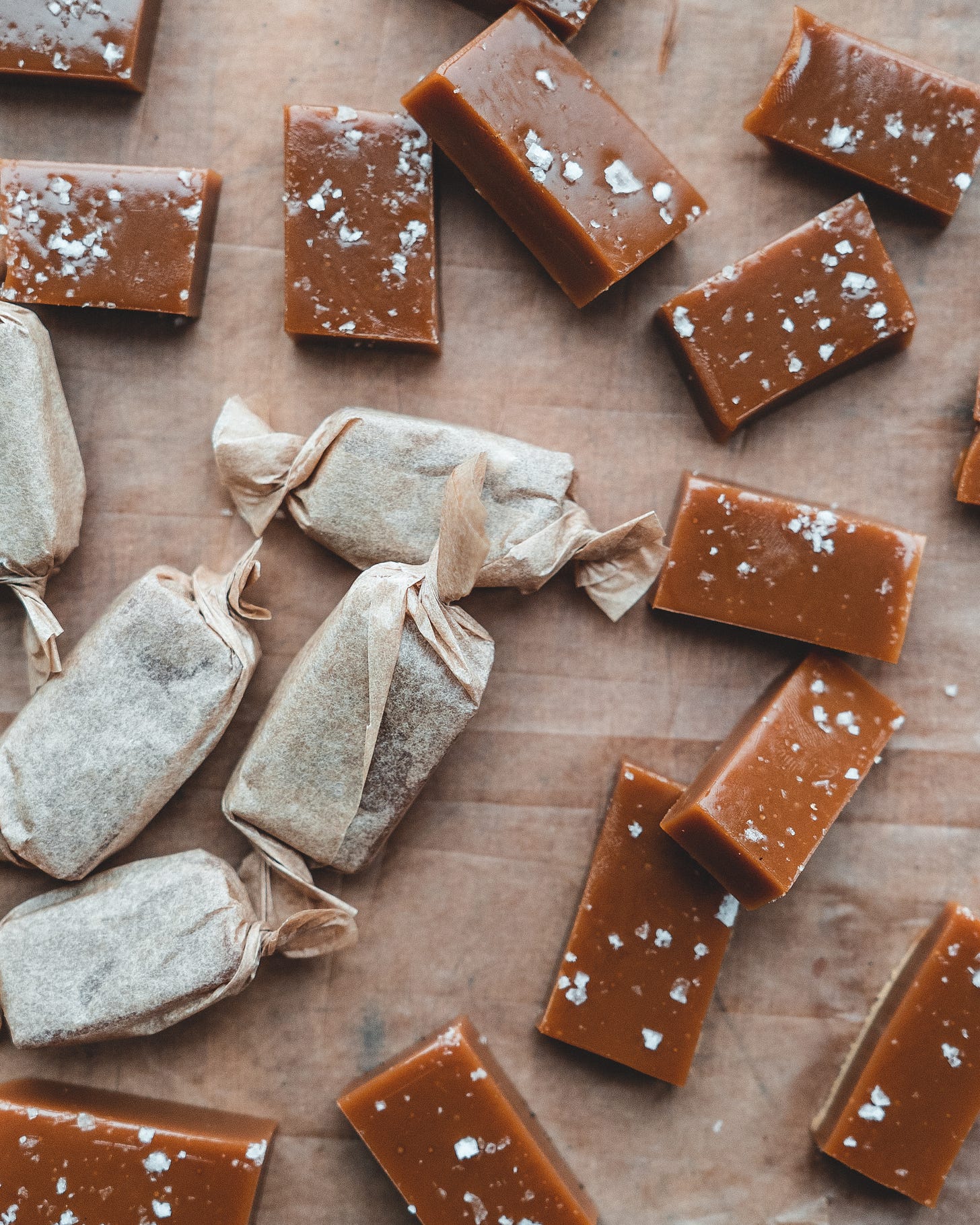Second Helpings #09 - A last minute edible gift or just a treat for yourself
lets make a big batch of classic salted caramels
Do you need a last minute Christmas gift idea? No I am not talking about my book Small Batch Bakes (even though it would make an amazing gift), no I am talking about edible gifts. Specifically, I am talking about salted caramels, a fabulous treat but also relatively cheap to make. This past week I made a double batch and used one half to make classic salted caramels; soft chewy and flecked with flakes of sea salt. The second half was studded with a mix of salted peanuts and cocoa dusted peanuts for somewhat of a snickers vibe. And even though this is not the purpose of making edible gifts, the recipe makes a generous amount of caramels so one or two kept back for yourself is a nice reward for making them.
When making caramel you have a couple options, dry or wet. Wet is when sugar is added to the pan with a little water and cooked like a syrup, slowly waiting for the colour to change a deep mahogany brown. The dry is, rather self explanatory, just the sugar added to a pan and cooked on its own until it melts, caramelises and then reaches the same colour. Every pastry chef and candy maker will have their own preference but, for me, for this caramel recipe, I choose dry every time. Wet caramels need particular care to avoid disastrous crystallisation. If you’ve ever watched any baking show, you will surely have heard the advice; leave the caramel alone, don’t stir it, don’t even look at it. When the caramel senses your fear it will seize into a crystallised mess of sugar with absolutely no way to rescue it. Dry caramel, on the other hand, is much more forgiving, you can stir it and crystallisation is much less likely due to the absence of water. You may get the occasional lump of unmelted sugar but you can break these apart with your spatula or turn the heat to low and wait for them to melt on their own.
If you are still determined to make a wet caramel here are a few tips. The first is what you already know, no stirring at least once the sugar has dissolved. When you add water to the sugar you can stir gently to combine everything together but as soon as the sugar is dissolved into the water and you have a clear syrup, you want to let the heat do it work. At most you can give the pan a swirl but keep your spatula out of the caramel. Crystallisation happens when there is undissolved sugar on the sides of the pan, or when the syrup is stirred, which can easily happen when the sugar and water are initially combined. To prevent this style of crystallisation you can do one of two things. The first is brush the sides of the pot with a wet pastry brush; the small amount of water will run down the sides of the pan and push any sugar back into the syrup to be dissolved. The second method, my preference, is to simply put a lid on the pan for a couple minutes at the start of the cooking process. The lid traps steam from the syrup as it cooks and the steam, since it can’t escape the pan, hits the lid and condenses back into a liquid and runs down the sides of the pan in the same manner as the pastry brush technique. Both methods achieve the same thing but the lid method is a little more hands off.
Keep reading with a 7-day free trial
Subscribe to The Boy Who Bakes to keep reading this post and get 7 days of free access to the full post archives.


